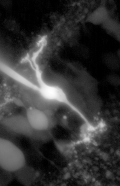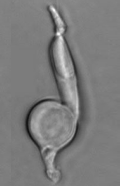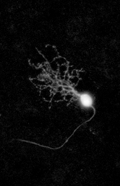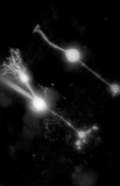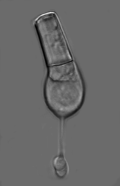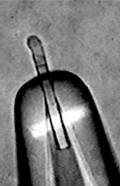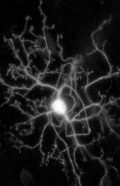Rieke Lab
Research
The central goal of our work is to relate biophysical mechanisms operating in the retina to defined roles in computation and ultimately behavior. The experimental basis for this work comes from several physiological preparations that allow us to track responses generated by the rod and cone photoreceptors across the retinal circuitry, and recently also from human behavioral work. Some current projects in the lab include:
- What computations are retinal ganglion cells – the output neurons of the retina – performing on visual inputs, and how does retinal circuitry support these computations? We are working to explore retinal processing in the context of natural visual stimuli, which we hope will provide insight into retinal computation as well as guide the development of models that predict neural responses to visual stimuli.
- What neural computations are supported by retinal amacrine cells, and how do the specific biophysical properties and synaptic connectivity patterns of individual amacrine subtypes shape these computations? Amacrine cells represent a particularly diverse population of retinal interneurons and our understanding of their physiology and synaptic connectivity is currently limited to ~3 of the >45 types found in mouse retina. Our research goals are two-fold: 1) Uncover the neuronal and synaptic underpinnings of visual pathways in the mammalian retina (primate and mouse), especially those involving amacrine cells. 2) Study the physiology and anatomy of these circuit components individually and collectively.
- How does bipolar cell diversity contribute to parallel processing in the retina? At the first synapse in the visual system, photoreceptor signals diverge to ~14 molecularly and anatomically distinct bipolar cell types. This forms the initial basis for multiple feed-forward excitatory circuits that convey signals to amacrine and ganglion cells. To understand how segregation of visual signals into distinct bipolar cell pathways contributes to retinal computation, we are investigating how visual signals are shaped as they traverse different bipolar cell circuits.
- What role does noise play in how information is encoded and transmitted in the retina? Noise places fundamental limits on perceptual thresholds, and for this reason, organisms often devote a substantial amount of metabolic and structural resources to reducing the effects of noise. Understanding how noise propagates through neural circuits will be critical for understanding circuit computations. Our work aims to understand how the contributions of different sources of noise change across different environmental conditions and how the nervous system adapts to these changes.
- When signals from different sources converge onto single neurons, differences between those signals can create a challenge for those cells that must integrate information from multiple concurrent inputs. We are working to understand retinal circuits in which signals from rod and cone photoreceptor types converge. What synaptic or circuit specializations allow for simultaneous processing of these two input types within the same circuitry?
